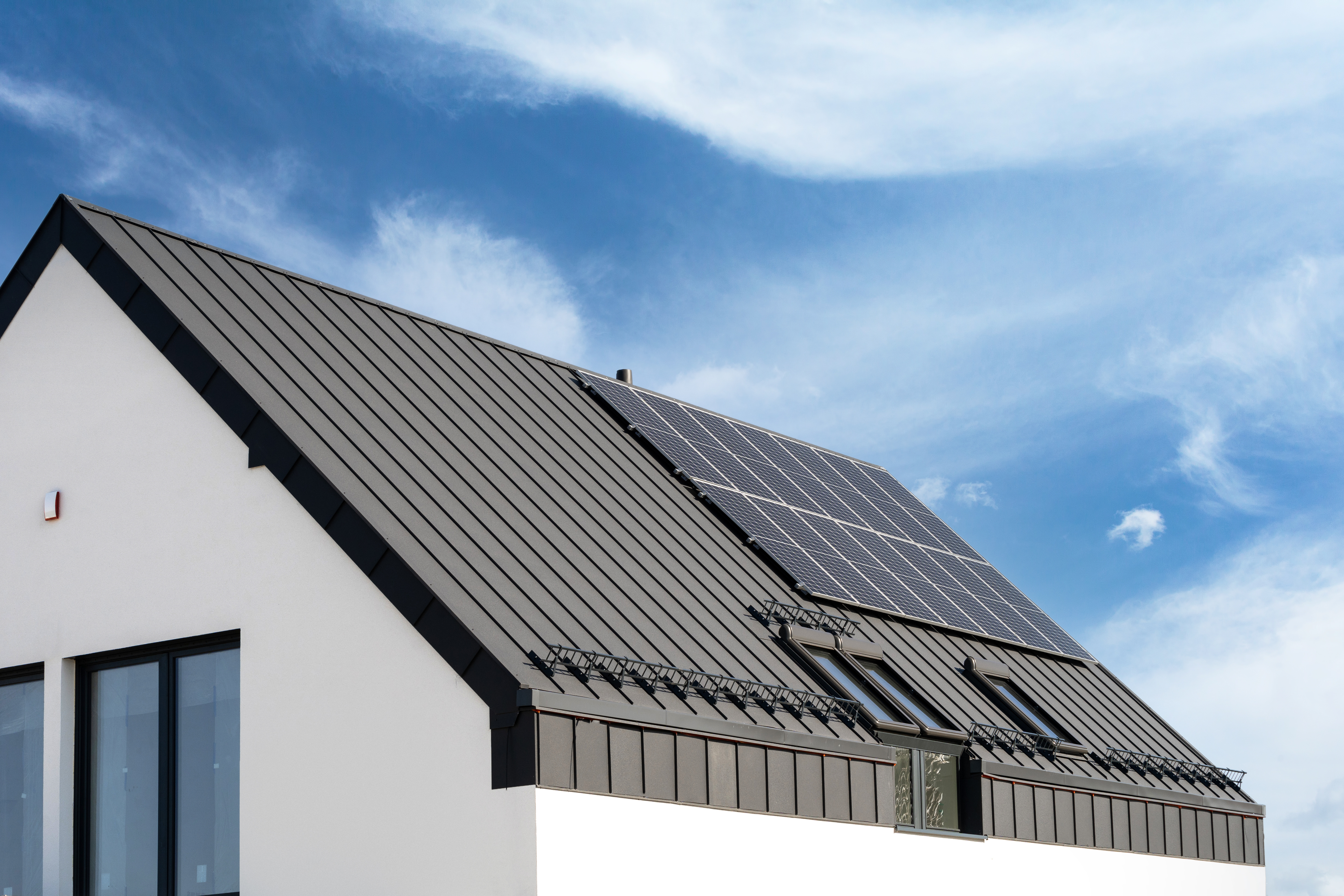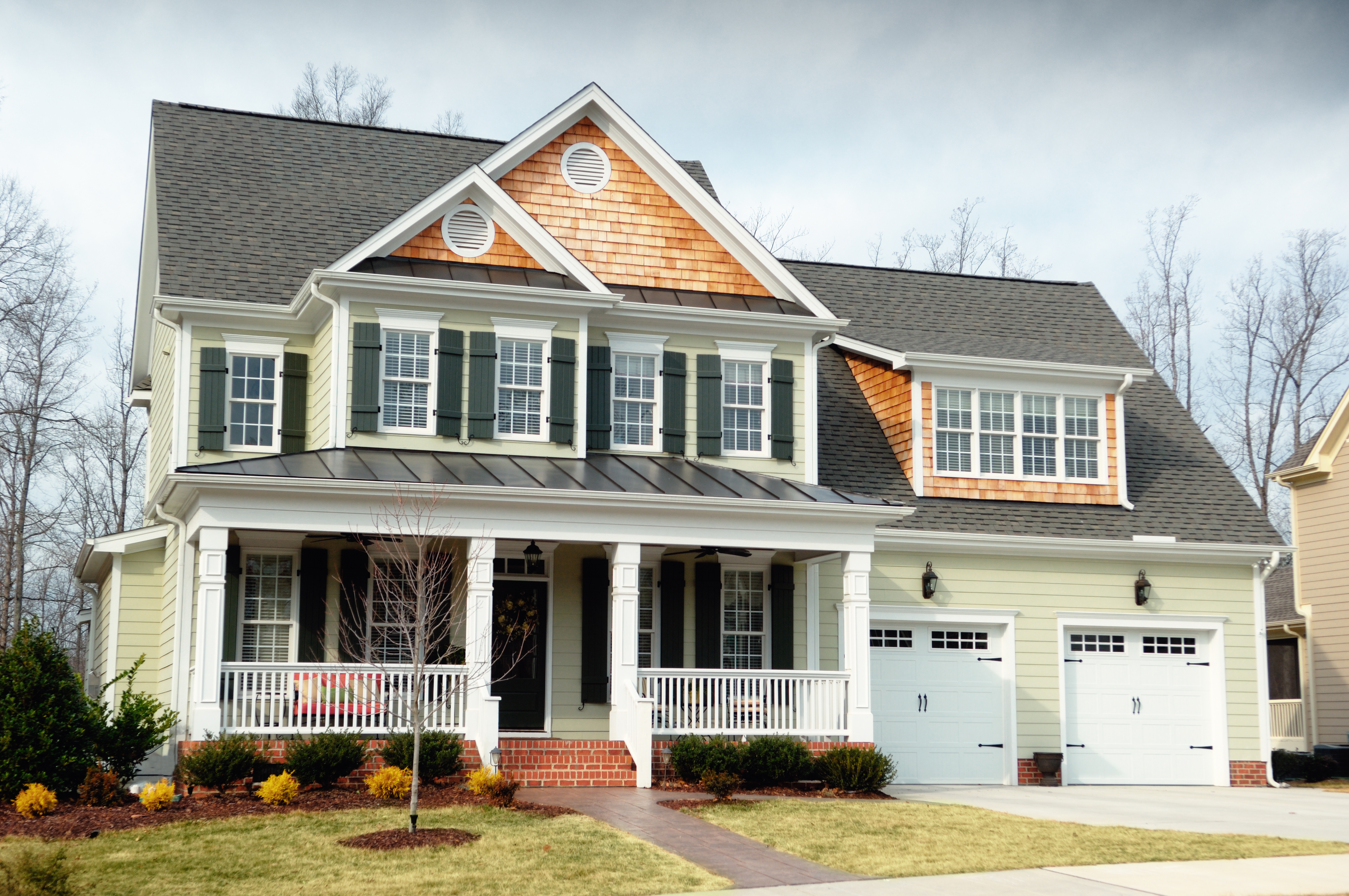
A metal roof can defend your home against Ohio’s varying weather conditions. Learn how much a metal roof costs in Columbus, OH.
Installing drip edge costs about $575 for the average roof, or between $150 and $1,000, depending on the type or drip edge and whether you hire a pro.


Installing new drip edge is most affordable when installing a new roof. Consider coupling these services to save money.
Roofers charge for drip edge based on linear feet, so larger and more complex roof designs with longer edges will drive up costs.
Aluminum is the most affordable drip edge material at 60% of the cost of galvanized steel and just 10% of the cost of high-end copper.
Types C and F drip edge can be half as expensive as type D—have your roofer help you choose the best option for your climate and gutters.
Drip edge installation costs $1 to $3 per linear foot on average, with most homeowners spending a total of $150 to $1,000 on an installation project. But if you choose a unique style and high-end material like copper, a drip edge can cost as much as $15 per linear foot.
A drip edge is a type of metal flashing that prevents water from getting inside your roof by directing it into your gutters. Sometimes referred to as just “flashing,” a drip edge is placed at a roof's edges to help guide water away from the fascia. Without it, water can get behind your gutters and rot the roof decking and fascia board. This guide will help you plan your budget.
Drip edge installation costs vary a bit based on factors like material, the length of your roof, the type of drip edge you choose, and more. Here’s how it breaks down.
When determining the price of installing drip edges, the biggest factor is whether or not it's part of a new roof installation. While you can install drip edges if your current roof does not have them, they won’t be as effective. In this case, you’ll pay for materials plus roofing labor. When folded into the price of a new roof, the cost of drip edges is nominal.
The size of your roof will directly impact how much you pay to install drip edge. If you have an existing drip edge and only need to install it on part of your roof, you’ll pay less. You’ll pay between $1 and $3 per linear foot of drip edge.
| Linear Feet | Cost Range |
|---|---|
| 150 | $150–$300 |
| 300 | $300–$600 |
| 600 | $600–$1,200 |
| 900 | $900–$1,800 |
| 1,200 | $1,200–$2,400 |
It’s a lot simpler to install a drip edge on a roof you can easily reach with a ladder. Contractors will charge more for the job if your home has a higher roof that’s difficult to access. Sometimes, they’ll even need to use special equipment.
Particularly complex roofs may increase the cost of installing a drip edge because it requires more time and effort from your pro. A steep roof pitch or multi-story home will also increase the price.
Most roofing contractors charge $45 to $75 per hour. In other words, the longer they’re working on your roof, the more the job is going to cost. Expect to spend a larger chunk of change if your drip edge installation is complicated and your contractor needs to make other repairs.
Drip edges cost anywhere from $3 to $75 per 10 linear feet, excluding labor. Common metals—like aluminum or galvanized steel—are on the low end of that cost range. You’ll spend more for a specialty metal.
| Material | Cost Per 10 Linear Feet |
|---|---|
| Aluminum | $3 – $10 |
| Galvanized Steel | $5 – $12 |
| Copper | $35 – $75 |
Aluminum drip edge flashing runs approximately $3 to $10 per 10 linear feet, depending on what style you choose. Aluminum is a common material for drip edges. While it isn’t as strong as steel, it doesn’t corrode. It’s also popular because you can find it in many colors.
Galvanized steel drip edge runs approximately $5 to $12 per 10 linear feet, depending on the style you choose. Galvanized steel drip edges prevent rust and must be a minimum of 24-gauge steel to withstand strong winds.
Copper drip edge runs approximately $35 to $75 per 10 linear feet, depending on what style you choose. Copper gives a roof a unique look. It must be a minimum of 0.69 millimeters or 20 ounces.
Style plays a role in the cost of your drip edge installation. The standard drip edge is L-shaped, but you may need or want a different type of drip edge depending on your existing roof. Here’s how the prices vary.
| Drip Edge Style | Average Cost |
|---|---|
| Type C | $3 – $10 per 10 linear feet |
| Type D | $10 – $15 per 10 linear feet |
| Type F | $3 – $10 per 10 linear feet |
Type C costs approximately $3 to $10 per 10 linear feet, depending on what material you choose. Type C (sometimes called L style) is L-shaped. It’s bent at a 90-degree angle and has a flange at the bottom.
Type D costs approximately $10 to $15 per 10 linear feet, depending on the material. This style drip edge is shaped like a T with a flange at the bottom. It is also called drip metal, D-metal, or T style. This style keeps the water farther away from the fascia.
Type F—also called F style or gutter apron—costs approximately $3 to $10 per 10 linear feet, again, depending on your material. It has an extended drip edge with a longer leading edge. This style is typical when installing new drip edges over existing shingles or on rake edges.
Roof work can be dangerous and requires a lot of know-how—and a tall ladder. This is a job best left to a roofing professional near you. However, if you choose to install drip edge yourself, you will save about $45 to $75 per hour on labor, which could come to a few hundred dollars. This will leave you with a materials cost of $1 to $15 per linear feet of drip edge, depending on the type you choose. You will also need a tape measure, hammer, pencil, ladder, small roofing nails, and tin snips, which could add more than $100 to your cost if you need to buy those tools and materials.
It should be standard operating procedure for homeowners and professional crews to install a drip edge to ensure water is being directed into the gutters and moved away from the home. Routinely cleaning clogged gutters can also mitigate roof leaks.
Drip edges are just a piece of what protects your home from water damage. It works in conjunction with your gutters, fascia boards, and soffit boards. Often, homeowners need to replace or repair these crucial parts of their roofs at the same time. You may need to add the following to your budget:
The cost of fascia and soffit replacement: $600 to $6,000
The cost to replace gutters: $4 to $30 per linear foot
The cost of general roof repairs: $150 to $7,800
If you’re already building a new roof or replacing your roof, the best way to save on installation costs is to have your contractor add a drip edge at the same time. Adding a drip edge on an already existing roof can get complicated, and it will drive up labor costs. Other ways to save include:
Choosing aluminum or galvanized steel.
Choosing a standard Type C drip edge.
Choosing a roofer with affordable rates and excellent reviews.
Many contractors don’t automatically install drip edges during roof construction, so you’ll need to ask upfront. Before signing any contract, remember to get a quote from at least three different contractors. This can help you gauge the typical local cost so you get the best value at the highest quality.
Home is the most important place on earth, which is why Angi has helped more than 150 million homeowners transform their houses into homes they adore. To help homeowners with their next project, Angi provides readers with the most accurate cost data and upholds strict editorial standards. We extensively research project costs to develop the pricing data you see, so you can make the best decisions for you and your home. We rely on reputable sources, including the U.S. Bureau of Labor Statistics, academic journals, market studies, and interviews with industry experts—all to ensure our prices reflect real-world projects.
Want to help us improve our cost data? Send us a recent project quote to [email protected]. Quotes and personal information will not be shared publicly.
From average costs to expert advice, get all the answers you need to get your job done.

A metal roof can defend your home against Ohio’s varying weather conditions. Learn how much a metal roof costs in Columbus, OH.

Dealing with a visibly damaged roof or leak? Learn about roof repair costs in Columbus to see how much you’ll need to budget for a permanent solution.

Learn about roof replacement costs in Columbus and what factors are at play to budget accurately and make sure you’re getting a fair price.

Furring strips support your metal roof and improve ventilation, but only if spaced correctly. Here’s the ideal spacing of furring strips for metal roofs.

When you install a new roof, you want it to last as long as possible. Knowing what voids a roof warranty helps you avoid situations that nullify the warranty.

Dormer additions are both stylish and practical. Check out how to increase your attic's living space while boosting your home's curb appeal.